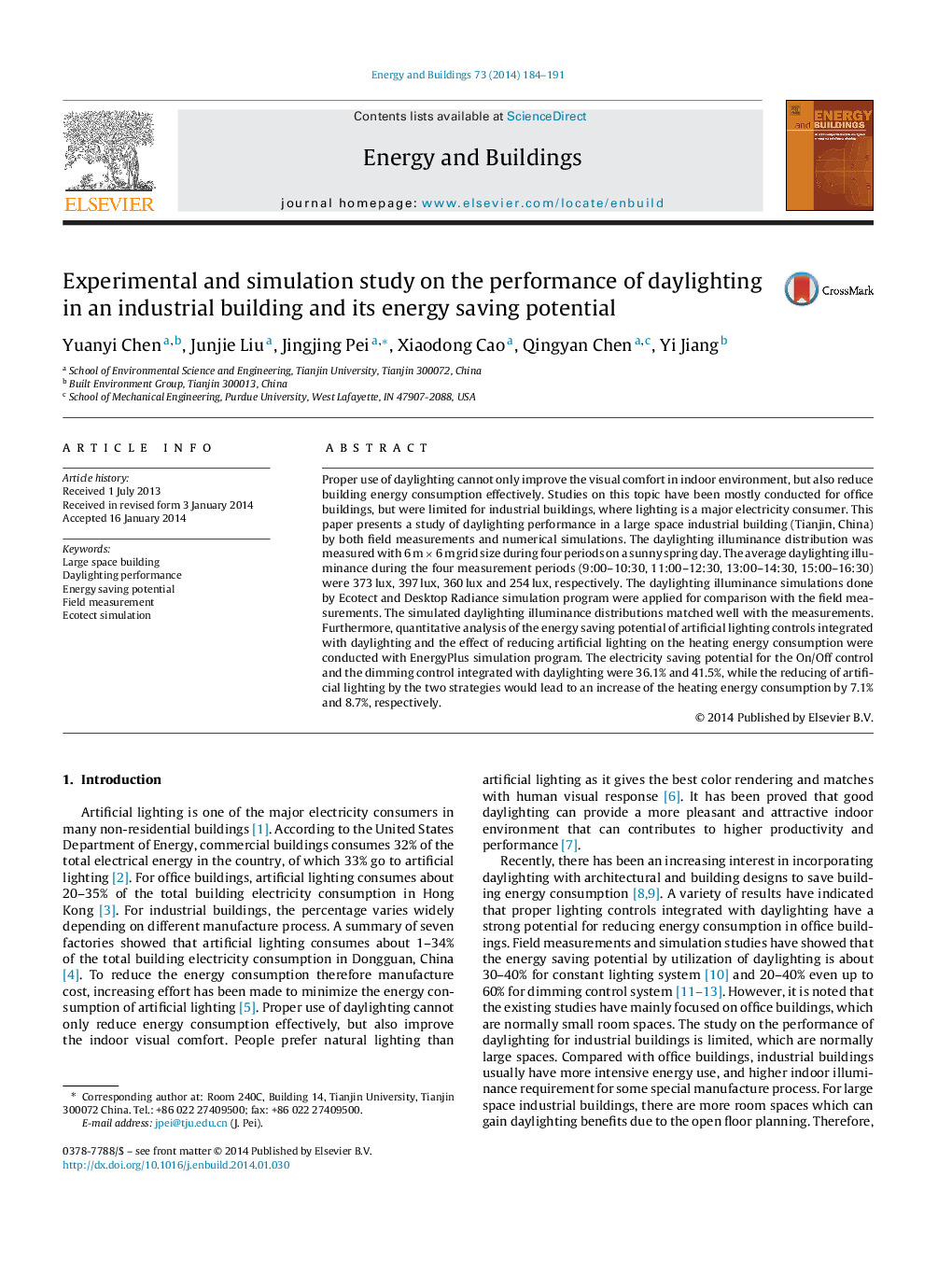| کد مقاله | کد نشریه | سال انتشار | مقاله انگلیسی | نسخه تمام متن |
|---|---|---|---|---|
| 262970 | 504058 | 2014 | 8 صفحه PDF | دانلود رایگان |
• Field measurement and simulation of daylighting performance.
• Evaluation of daylighting environment quality of an industrial building.
• Quantitative comparison of experimental and simulation results of illuminance.
• Energy performance evaluation of different daylighting strategies.
Proper use of daylighting cannot only improve the visual comfort in indoor environment, but also reduce building energy consumption effectively. Studies on this topic have been mostly conducted for office buildings, but were limited for industrial buildings, where lighting is a major electricity consumer. This paper presents a study of daylighting performance in a large space industrial building (Tianjin, China) by both field measurements and numerical simulations. The daylighting illuminance distribution was measured with 6 m × 6 m grid size during four periods on a sunny spring day. The average daylighting illuminance during the four measurement periods (9:00–10:30, 11:00–12:30, 13:00–14:30, 15:00–16:30) were 373 lux, 397 lux, 360 lux and 254 lux, respectively. The daylighting illuminance simulations done by Ecotect and Desktop Radiance simulation program were applied for comparison with the field measurements. The simulated daylighting illuminance distributions matched well with the measurements. Furthermore, quantitative analysis of the energy saving potential of artificial lighting controls integrated with daylighting and the effect of reducing artificial lighting on the heating energy consumption were conducted with EnergyPlus simulation program. The electricity saving potential for the On/Off control and the dimming control integrated with daylighting were 36.1% and 41.5%, while the reducing of artificial lighting by the two strategies would lead to an increase of the heating energy consumption by 7.1% and 8.7%, respectively.
Journal: Energy and Buildings - Volume 73, April 2014, Pages 184–191
